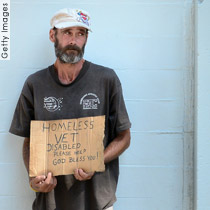
This piece by Community Solutions President Rosanne Haggerty appeared on February 19, 2015 alongside several others in a Room for Debate feature in the New York Times.
The world is full of complex social problems for which no reliable, cost effective solutions have been found. Homelessness is not one of them.
The truth is that we have known how to end homelessness for several years now, and solid research, which has been replicated repeatedly, has proven that it is far cheaper to do so than to allow the problem to persist. The cheapest, most assured way to end homelessness turns out to be deceptively simple: provide homeless Americans, many of whom struggle with disability, mental illness, or life threatening health conditions, with stable homes.
Imagine our surprise when we removed our initial restrictions and discovered that just the opposite was true.For years, people like me assumed the solution had to be something else. In the 1990s, I developed supportive housing buildings for homeless New Yorkers, where we initially screened out people with untreated mental illness, addiction problems, or poor income prospects. “Unlikely to succeed in housing,” we reflected sadly.
It turned out that virtually everyone could remain in housing, given the right combination of supportive services to help them succeed. Some people needed complex services like psychiatrist visits and regular access to primary care. Others needed much simpler support, like help devising a budget or a weekly grocery list.
As shocked as we were to see some of our most vulnerable neighbors escape the streets successfully, we were even more shocked by what happened to their healthcare costs. As our tenants were connected to primary care and received consistent help in managing other challenges, they no longer made frequent visits to hospitals.
Over the next several years, many other organizations saw similar results by taking a “housing first” approach, and soon a host of scholarly studies began to document the phenomenon. A 2002 study by Dennis Culhane at the University of Pennsylvania found that supportive housing — a term for permanent housing combined with basic health and social services —reduced public systems costs by more than 40 percent in New York City, even after the cost of rent and services was taken into account. In 2009, a study published in the Journal of the American Medical Association documented even greater savings in Seattle, where those housed saw their costs drop roughly 60 percent.
Today, a trove of studies have been published in journals across the country replicating and substantiating these results. Last year, my own organization concluded the 100,000 Homes Campaign, which helped 186 US communities move more than 105,000 homeless Americans into supportive housing over four years. An estimate we commissioned at the time from a leading firm places the taxpayer savings associated with that achievement at nearly $1.3 billion, repeating annually.
Today, we not only know that housing ends homelessness, we also know that not everyone needs the same kind of housing assistance. Permanent supportive housing is ideal for those with serious health challenges who have been homeless for long periods of time, but many others need far less help to escape shelters and the streets. This is good news because less intensive approaches like “rapid rehousing”– an approach employing short- to medium-term rental assistance– work well for many and are even less expensive than supportive housing.
By matching people to the right level of housing assistance quickly, we can end the misery of homelessness for those experiencing it while making smart use of public resources.



